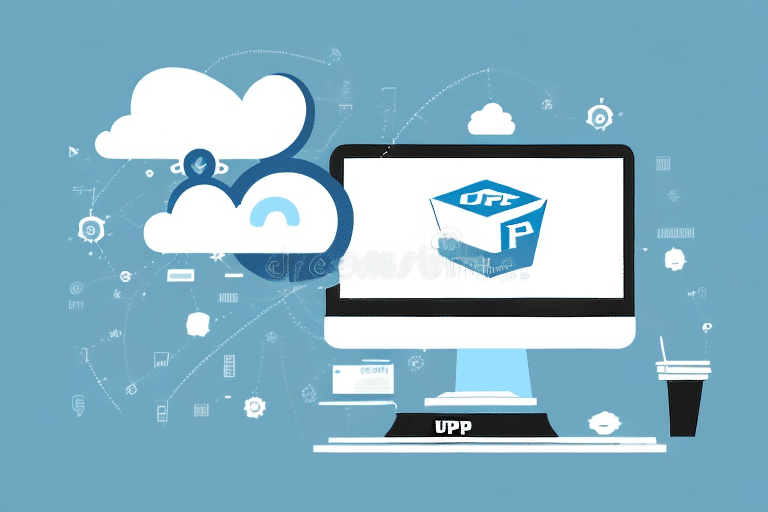Understanding the Importance of UPS Integration with Acumatica Cloud ERP
Integrating UPS with Acumatica Cloud ERP is crucial for businesses aiming to streamline their shipping and logistics operations. This integration allows businesses to manage shipments and deliveries seamlessly within the Acumatica platform, accessing UPS services such as real-time shipping rates, tracking, and label printing directly from the ERP system. By facilitating timely deliveries, this integration enhances customer satisfaction and boosts overall business efficiency.
Additionally, the integration provides businesses with real-time visibility into their shipping and delivery operations. This capability enables accurate tracking of shipments, informed decision-making regarding logistics, and the identification of areas for process improvement. By leveraging this data, businesses can optimize their shipping strategies, reduce costs, and enhance operational performance.
Moreover, automating shipping and delivery processes through the integration reduces manual data entry and minimizes the risk of errors. This not only saves time but also helps maintain accuracy in order fulfillment, thereby protecting customer satisfaction and the business's reputation.
Key Features of UPS Integration with Acumatica Cloud ERP
The UPS integration with Acumatica Cloud ERP offers several robust features designed to streamline shipping operations:
- Real-Time Shipping Rates: Calculate shipping costs based on package size, weight, and destination.
- Shipment Tracking: Monitor shipments in real-time to stay updated on delivery statuses.
- Label Printing: Generate and print shipping labels directly from the ERP system.
- Pickup Scheduling: Schedule package pickups without leaving the Acumatica platform.
- Notifications and Alerts: Receive timely updates on shipment statuses and delivery confirmations.
- Shipping Analytics: Access historical shipping data for insights and process optimization.
These features collectively provide a comprehensive solution for managing shipping processes efficiently, reducing manual tasks, and maintaining visibility throughout the delivery cycle.
Setting Up UPS Integration with Acumatica Cloud ERP
Setting up UPS integration with Acumatica Cloud ERP is a straightforward process that involves the following steps:
- Obtain a UPS Account and API Key: Sign up for a UPS account and request an API key necessary for integration.
- Access Acumatica’s Integration Tools: Use Acumatica’s built-in integration tools to configure the UPS connection using the API key.
- Configure Shipping Options: Set up shipping preferences, billing, and payment options within the Acumatica platform.
- Test the Integration: Conduct tests to ensure the integration is functioning correctly, including rate calculations and label generation.
- Go Live: Once testing is successful, deploy the integration to start managing shipments directly from Acumatica Cloud ERP.
By following these steps, businesses can quickly integrate UPS with Acumatica, enabling efficient and automated shipping processes.
Best Practices for Optimizing UPS Integration with Acumatica Cloud ERP
To maximize the benefits of UPS integration, businesses should implement the following best practices:
- Ensure Accurate Customer Information: Verify that all customer shipping addresses and contact details are up-to-date and accurate to prevent delivery issues.
- Regular Integration Testing: Periodically test the integration to identify and resolve any issues promptly, ensuring smooth operation.
- Monitor Shipping Rates: Continuously monitor and adjust shipping options to take advantage of the most cost-effective rates.
- Utilize Tracking and Monitoring Tools: Implement tools to track shipments and provide real-time updates to customers, enhancing transparency and satisfaction.
- Automate Shipping Processes: Leverage automation to reduce manual tasks, minimize errors, and improve efficiency.
By adhering to these practices, businesses can ensure their UPS integration remains efficient, cost-effective, and aligned with their logistical needs.
Common Challenges and Solutions for Managing UPS Integration with Acumatica Cloud ERP
While UPS integration offers significant benefits, businesses may encounter challenges such as:
Handling Shipping Exceptions
Shipping exceptions like missed deliveries or address changes can disrupt the delivery process. To manage these exceptions:
- Use UPS’s advanced notification system to alert customers about shipment changes.
- Set up internal notifications within Acumatica to stay informed about any issues.
Tracking Multiple Shipments
Managing a high volume of shipments can be overwhelming. To tackle this:
- Implement the UPS WorldShip integration with Acumatica, enabling efficient tracking and management of multiple shipments.
- Use Acumatica’s reporting tools to analyze shipping data and identify areas for improvement.
Benefits of Using UPS and Acumatica Cloud ERP Together
The integration of UPS with Acumatica Cloud ERP brings numerous benefits to businesses:
- Streamlined Shipping Processes: Simplify shipping operations by managing shipments directly within the ERP system.
- Cost Savings: Access discounted shipping rates and optimize shipping options to reduce costs.
- Enhanced Operational Efficiency: Automate shipping tasks to increase productivity and minimize errors.
- Improved Customer Satisfaction: Ensure timely deliveries and provide accurate shipping information to customers.
- Detailed Shipping Analytics: Utilize shipping data to make informed decisions and optimize logistics strategies.
These benefits collectively contribute to a more efficient, cost-effective, and customer-friendly shipping operation.
Tips for Streamlining Shipping Processes with UPS and Acumatica Cloud ERP
To further enhance shipping efficiency, businesses can implement the following tips:
- Automate Shipping Label Generation: Use UPS’s shipping API to automatically generate labels and track packages.
- Leverage Acumatica’s Analytics Tools: Monitor and optimize shipping costs through built-in analytics.
- Consolidate Shipments: Reduce the number of packages by consolidating shipments, which lowers overall shipping costs.
- Utilize UPS My Choice: Offer customers the ability to customize delivery preferences and receive shipment notifications, enhancing their experience.
- Adopt Sustainable Practices: Consider UPS’s carbon-neutral shipping options to minimize environmental impact and showcase commitment to sustainability.
Implementing these strategies can lead to significant improvements in shipping efficiency and cost management.
Case Studies: Successful Implementation of UPS Integration with Acumatica Cloud ERP
Numerous businesses have successfully integrated UPS with Acumatica Cloud ERP, resulting in measurable improvements:
- Order Fulfillment Enhancement: A company improved its order fulfillment process by 75% through automation via Acumatica’s UPS integration.
- Shipping Cost Reduction: Another business reduced shipping costs by 20% by utilizing UPS’s real-time shipping rates and optimizing shipping options.
These case studies highlight the tangible benefits of integrating UPS with Acumatica Cloud ERP, demonstrating increased efficiency and cost savings.
In conclusion, integrating UPS with Acumatica Cloud ERP is a strategic move that can significantly streamline shipping processes, enhance operational efficiency, and improve customer satisfaction. By following best practices and leveraging the full range of integration features, businesses can achieve greater success and scale their operations effectively.
Furthermore, real-time shipment tracking enables businesses to provide accurate delivery estimates and proactively address potential delays, enhancing customer service and loyalty. The integration also supports sustainable practices, such as carbon-neutral shipping, contributing to environmental responsibility and a positive brand image.
Overall, the UPS integration with Acumatica Cloud ERP is a valuable tool for businesses seeking to optimize their shipping operations and achieve sustained growth.






















